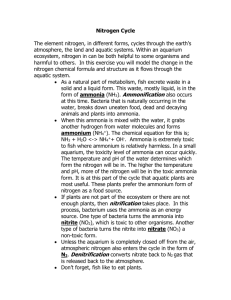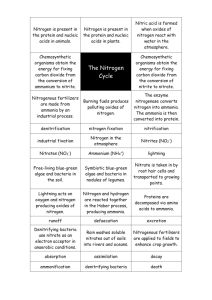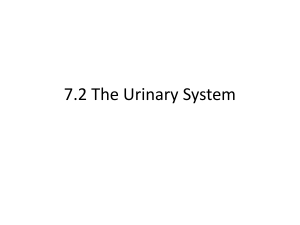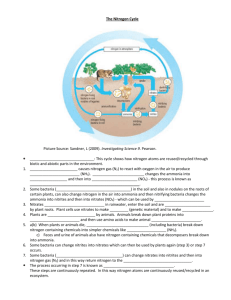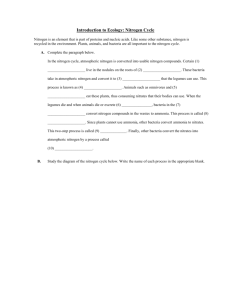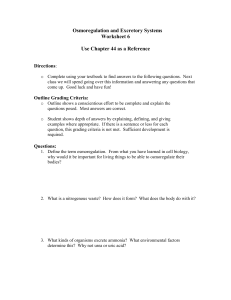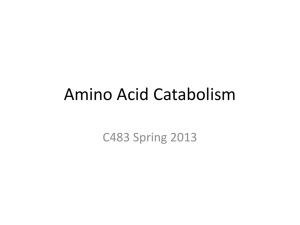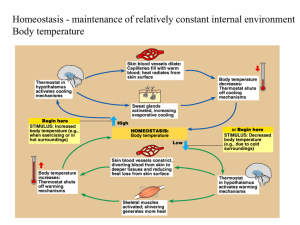Activating Strategy AP Lesson #81 What is osmoregulation?
advertisement
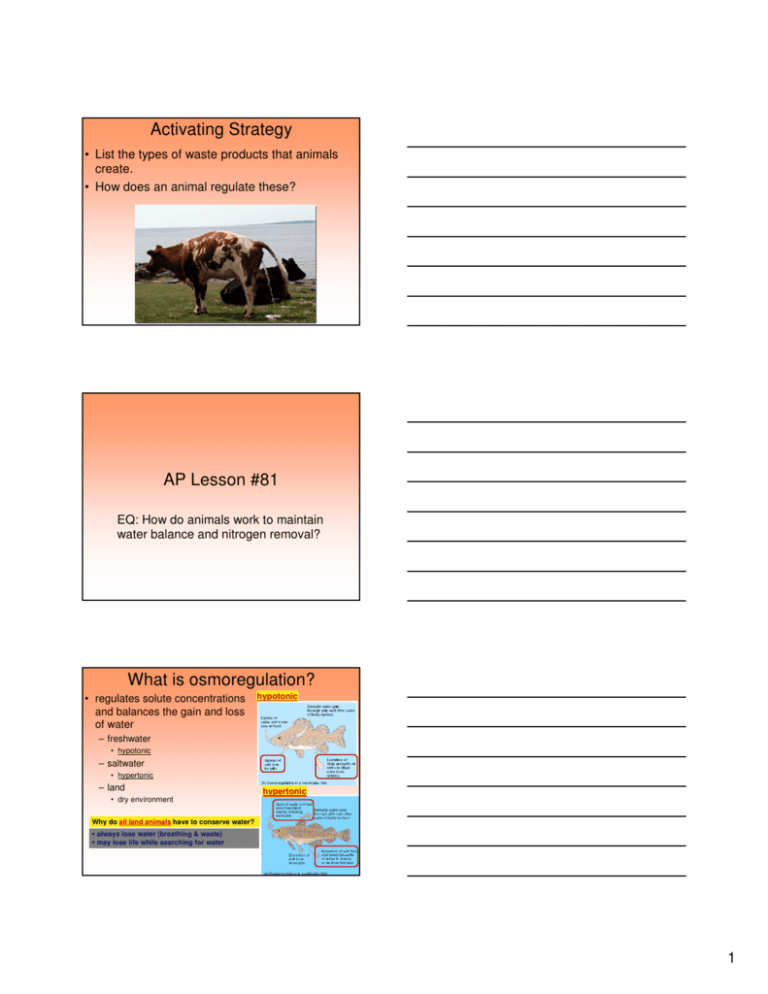
Activating Strategy • List the types of waste products that animals create. • How does an animal regulate these? AP Lesson #81 EQ: How do animals work to maintain water balance and nitrogen removal? What is osmoregulation? • regulates solute concentrations and balances the gain and loss of water hypotonic – freshwater • hypotonic – saltwater • hypertonic – land hypertonic • dry environment Why do all land animals have to conserve water? always lose water (breathing & waste) may lose life while searching for water 1 How do land animals osmoregulate? • Land animals manage water budgets by: – Drinking water – eating moist foods – using metabolic water • Anatomical features and behaviors: – Water storage (ex. Camels) – Layers of waxy coverings (ex. Human skin) – nocturnal life style Fig. 44-6 Water balance in a kangaroo rat (2 mL/day) Ingested in food (0.2) Water gain (mL) Water balance in a human (2,500 mL/day) Ingested in food (750) Ingested in liquid (1,500) Derived from metabolism (250) Derived from metabolism (1.8) Feces (0.09) Water loss (mL) Urine (0.45) Evaporation (1.46) Feces (100) Urine (1,500) Evaporation (900) How do animals create intracellular waste? • Cellular Digestion! – proteins = CHON → CO2 + H2O + N – nucleic acids = CHOPN → CO2 + H2O + P + N We CANNOT store N! NH2 = ammonia H| O || N–C– C–OH | H R H CO2 + H2O 2 What happens to the nitrogen from metabolic reactions? • Ammonia (NH3) – very toxic – very soluble – must dilute it & get rid of it… fast! • How you get rid of nitrogenous wastes depends on: – who you are and where you live aquatic terrestrial terrestrial egg layer How does nitrogen leave the body? • Aquatic organisms – Ammonia = most toxic • Terrestrial – Urea = less toxic • Terrestrial egg layers – uric acid = least toxic How do freshwater animals dispose of nitrogen waste? • Use surplus water to dilute ammonia – need to excrete it as very dilute urine – also diffuse ammonia gills or through any moist membrane • Reabsorb salts in kidneys or active transport across gills Predators track fish by sensing ammonia 3 How do land animals dispose of nitrogen waste? • Need to conserve water – urea = larger molecule = less soluble = less toxic • produced in liver • Kidney H H H – filter solutes out of blood – reabsorb H2O (+ any useful solutes) – excrete waste H N C O N • urine = urea, salts, excess sugar & H2O mammals How do egg-laying land animals dispose of nitrogen waste? • Cannot get rid of waste in the egg – uric acid = BIGGER = less soluble = less toxic – Insoluble in water • birds, reptiles, insects What’s the deal with uric acid? • Polymerized urea – large molecule – precipitates out of solution = solid • doesn’t harm embryo in egg – white dust in egg • adults still excrete N waste as white paste So that is why most male birds don’t have a penis! – no liquid waste = white bird “poop”! – Chemically reacts copper and bronze O H H N N O O N N H H 4 Summarizing Strategy • Create a graphic organizer for information about the three different forms of nitrogen wastes. Nitrogen Waste Assessment • HW: Read Chapter 44.2 – 44.5 (pgs 960 – 972) 5


